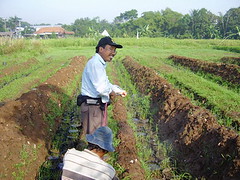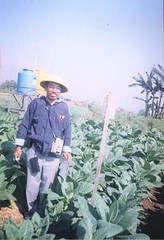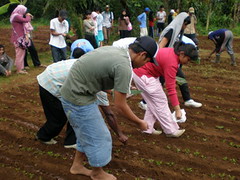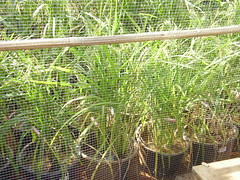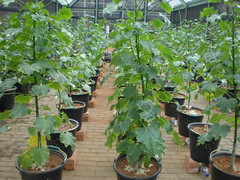Effect of Irrigation Frequency and irrigation Time on Growth and Production of East Indian Galanggale (Kaempferia galangal L.)
Eko Sulistyono(1) and Indriati (2)
(1) Departemen Agronomi dan Hortikultura, Faperta, IPB. Email:pengelolaanair@yahoo.com, ekosulistyono@ipb.ac.id, HP:081310342431. Telp:0251-86380733.
(2) Alumni Departemen Agronomi dan Hortikultura, Faperta, IPB
(1) Departemen Agronomi dan Hortikultura, Faperta, IPB. Email:pengelolaanair@yahoo.com, ekosulistyono@ipb.ac.id, HP:081310342431. Telp:0251-86380733.
(2) Alumni Departemen Agronomi dan Hortikultura, Faperta, IPB
Abstract
The research was conducted to result F factor value (fraction of available water that could be absorbed by Kaempferia galangal L.). This value was needed for determining irrigation frequency. Factorial experiment was arranged in Randomized Block Design with three replications. The first factor was irrigation frequency included irrigation until field capacity every 2, 4, 6, 8 days respectively, irrigation every 2 days until 75%, 50%, and 25% of available water respectively. The second factor was irrigation time included from planting, 2 weeks before harvesting, and 4 weeks before harvesting until harvesting respectively. Interaction between irrigation frequency and irrigation time effected plant height, leaf area index, evapotranspiration, but did not affect yield. Treatment that resulted the highest plant, the biggest leaf area index and the least evapotranspiration was irrigation until field capacity every 6 days from 4 weeks before harvesting until harvesting. The research resulted F factor value (fraction of available water that could be absorbed by Kaempferia galangal L.) as much as 48%.____________________________
Key word: evapotranspiration, irrigation frequency, East Indian Galanggale.
